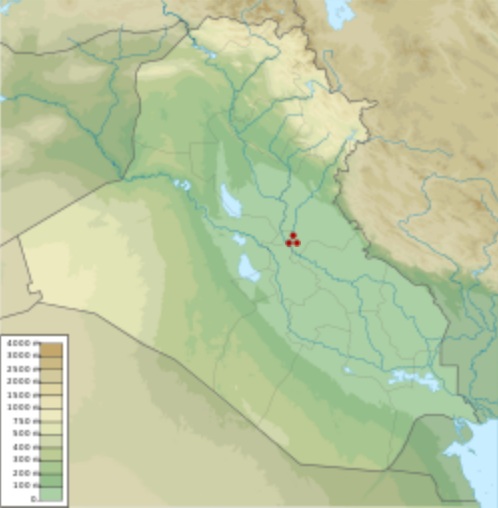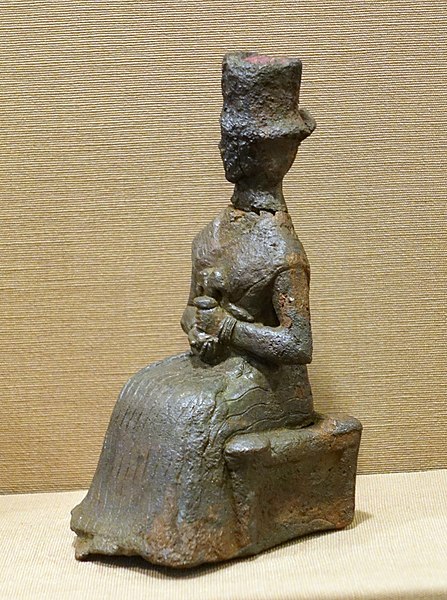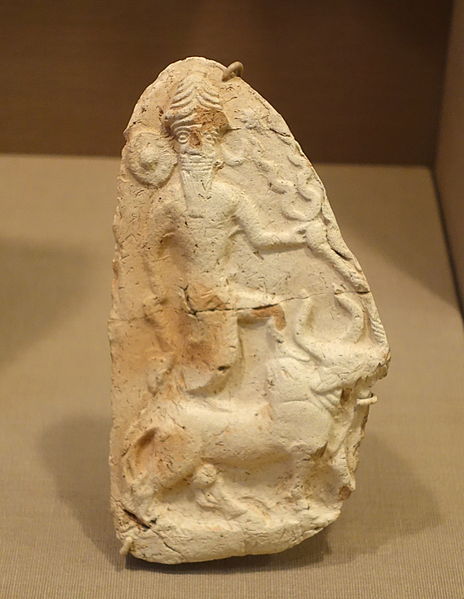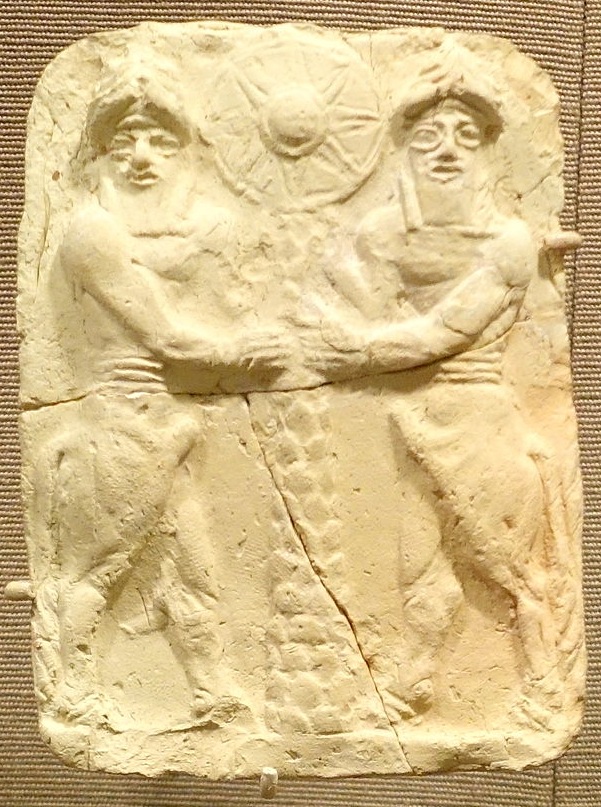
| TELL ISHCHALI
Tell Ishchali shown within Iraq Location : Diyala Province, Iraq
Region : Mesopotamia
Coordinates : 33°18'11 N 44°35'03.3 E
Type : tell
Area : 23 ha (57 acres)
Site notes :
Excavation dates : 1934 - 1936
Archaeologists : T. Jacobsen, H. Hill
Tell Ishchali is an archaeological site in Diyala Province (Iraq). It is thought to be ancient Nerebtum or Kiti and was part of the city-state of Eshnunna. It was occupied during the Old Babylonian period.
Ancient
name :
History
of archaeological research :
Tell Ishchali and its environment :
Four-headed god statuette, Isin-Larsa to Old Babylonia periods, 2000 - 1600 BC, Ishchali. Oriental Institute Museum The site lies about 3 miles (4.8 km) south and 7 miles (11 km) east of the modern city of Baghdad and 15 miles (24 km) southeast of Eshnunna on the Diyala River, a tributary of the Tigris. The main tell at Ishchali measures roughly 600 by 300 metres (1,970 ft × 980 ft). There are also small mounds to the north and south of it. The entire site covers around 23 hectares (57 acres).
History
of occupation :
The most notable feature of Ishchali is the main temple. It was that of Inanna-Kitium, or Inanna of Kiti. It is one of the largest temples ever found in the ancient Near East. Rebuilt several times, always following the original plan, the monumental building consisted of one large upper temple and two smaller areas which are thought to be shrines. The many tablets found there give an excellent picture of temple life. A number of cylinder seals dating from the Early Dynastic to the Larsa period were also found there, assumed to be relic donations to the temple. There was also a smaller temple to the local city-god version of the god Sin.
Material
culture :
Artifacts from Ishchali :
Four-faced goddess, Ishchali, Isin-Larsa to Old Babylonia periods, 2000 - 1600 BC, bronze - Oriental Institute Museum, University of Chicago
Storm god, Ishchali, Isin-Larsa to Old Babylonian, 2000 - 1600 BC, baked clay - Oriental Institute Museum, University of Chicago
Plaque with bull-men holding a palm trunk with sun disk, Ishchali, Isin-Larsa to Old Babylonian, 2000 - 1600 BC, baked clay - Oriental Institute Museum, University of Chicago
Storm god, Ishchali, Isin-Larsa to Old Babylonian, 2000 - 1600 BC, baked clay - Oriental Institute Museum, University of Chicago
Musician playing a lute, Isin-Larsa period, 2000 - 1600 BC, baked clay - Oriental Institute Museum, University of Chicago
Source :
https://en.wikipedia.org/ |

.jpg)




